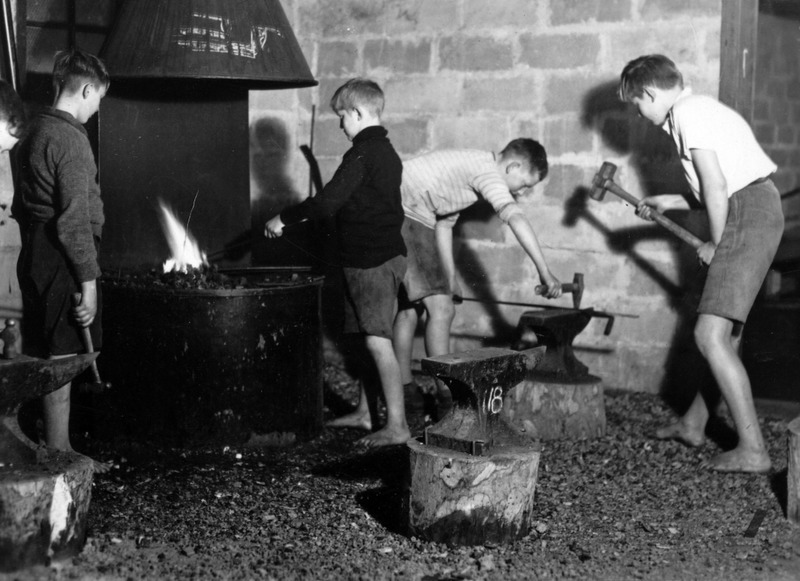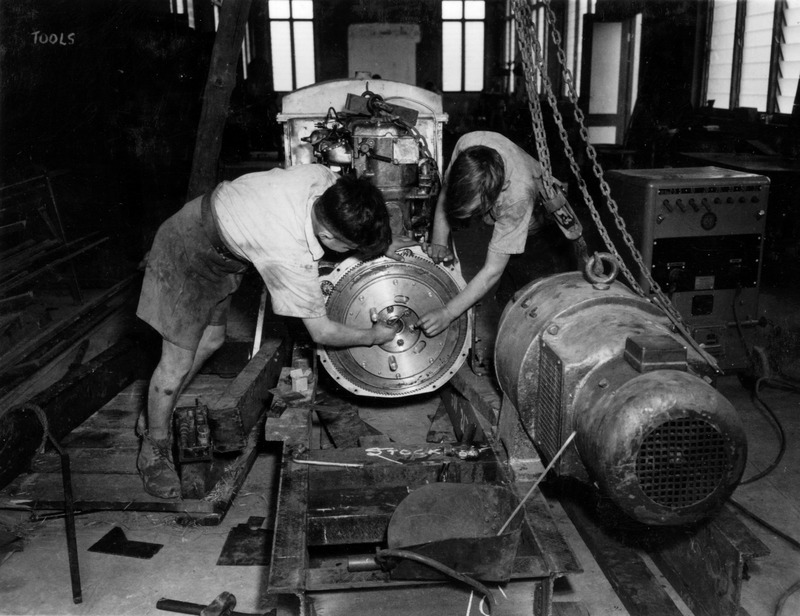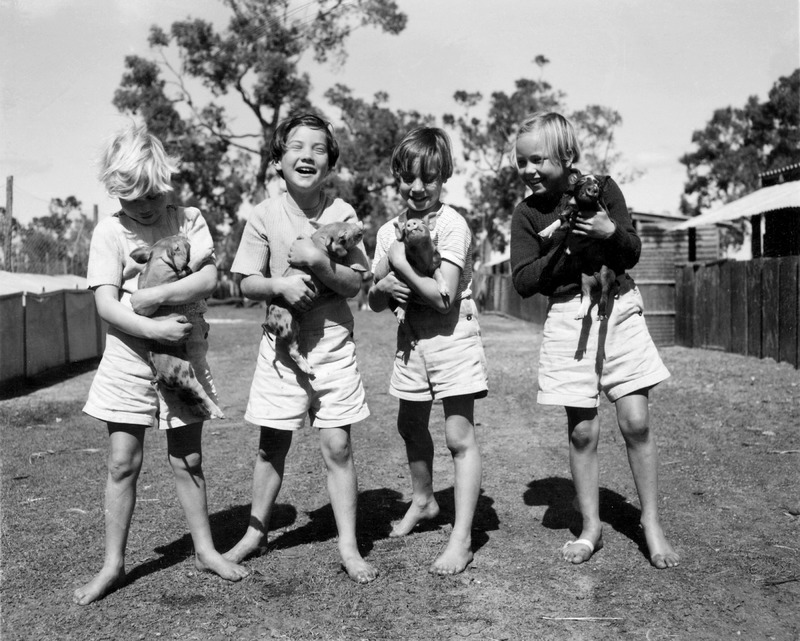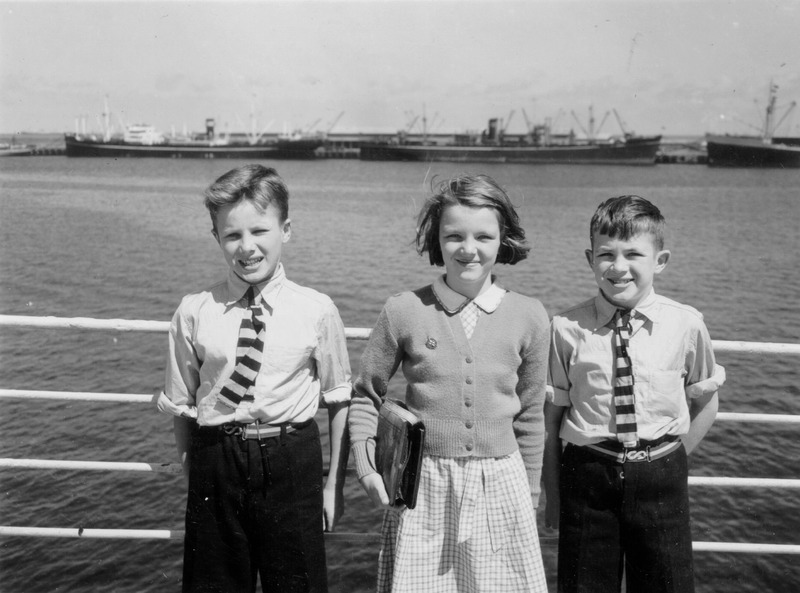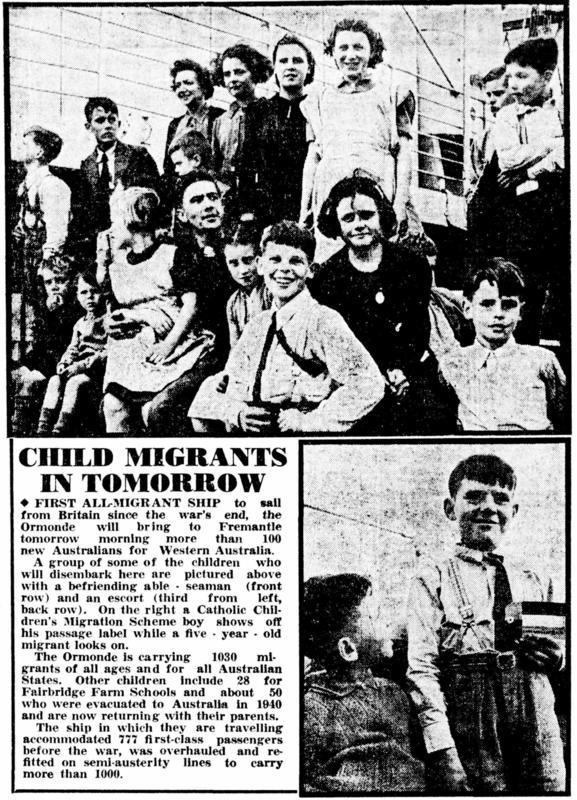Child Migrants
Between 1922 and 1967, 150,000 children, mostly 8 to 9 years old, were shipped from Great Britain to help populate the British Dominions of Canada, Rhodesia, New Zealand and Australia with 'good white stock'. The Australian Government welcomed the scheme and encouraged non-government organisations such as Barnados and Fairbridge to assist with settling child migrants. Many child migrants were ill-treated in the institutions to which they were sent. They were compulsorily shipped out of Britain where many of the children were deceived into believing their parents were dead, and that a more abundant life awaited them. Some were exploited as cheap agricultural labour or denied proper shelter and education. It was common for “Home Children” to run away.
Estimates of the number of children sent to Western Australia vary from 5,000 to 10,000, most of whom were sent to charitable and religious institutions. The total number of children assigned to Fairbridge Farm School in Western Australia, from January 1913 until March 1983, was 3580.
Child immigration schemes continued after the Second World War. Children were considered more adaptable, with a long work career ahead and could be cheaply accommodated in dormitory style homes. A popular slogan reflected society’s views, ‘The Child, the best immigrant’. Between the 22nd September 1947 and the 31st December 1967, hundreds of children, ‘unaccompanied minors’ immigrated to Australia from Malta, the UK and other European countries.
Great Britain has a long history of child migration schemes. The Children's Friend Society was founded in London in 1830 as "The Society for the Suppression of Juvenile Vagrancy through the reformation and emigration of children". In 1832, the first groups of children were sent to the Cape Colony in South Africa and the Swan River Colony in Australia.
Child migrants were adopted or brought up in children's homes, institutions, orphanages or foster care. Many of these children experienced neglect and abuse while in institutional care. Prime Minister of Australia, Kevin Rudd apologised on behalf of the government of Australia on the 16th November 2009. On the 24th of February 2010, United Kingdom Prime Minister Gordon Brown issued an apology to child migrants. As of 2009, there were an estimated 7,000 "Child Migrants" currently residing in Australia.
Focus Questions
- Why were child migration schemes considered useful to Great Britain?
- What were the perceived benefits to Western Australia?
- Research Kingsley Fairbridge. Compare and contrast the intention of his ‘Farm Schools’ with the outcomes for children who attended them.
- Why were children considered particularly good as new emigrants to Australia?
- What were the problems for some of the child migrants growing up far from home?
- What was Prime Minister Rudd apologising for?
Key words
You may wish to find out more about child migration schemes. The following key words can help you find information:
dominion
scheme
institution
child migration
farm school
unaccompanied minor
Websites
The following websites can help you with reliable information:
State Library of Western Australia
National Archives of Australia - Child migration
Parliament of Australia - Child Migrants from the United Kingdom
Fairbridge Kids - Arrival of the orphan children
National Museums Liverpool - 17th and 18th century child emigration
State Library of Victoria - Child migrants
Australian Screen - The Leaving of Liverpool (two video clips)


